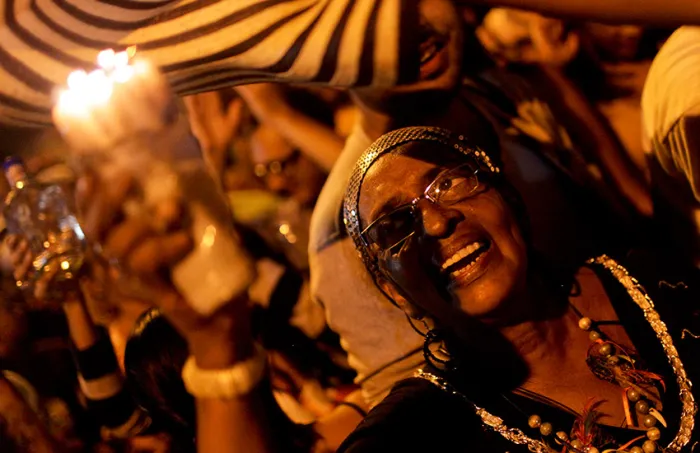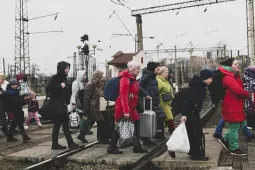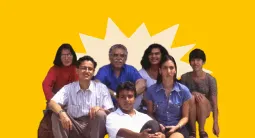Cumbia

On a Thursday, at twilight, the intersection is quiet. Few cars go by. A spotless arepa stand offers Colombian corncakes on one corner, a tiny grocery store sells soda and candy on the next, and tangerine-colored houses occupy the other two. It would be easy to ignore the simple white banner stretched from one telephone pole to the other. Blink and you’d miss a two-meter round stage, cobbled from scrap wood that sits on the sidewalk. But ignoring these clues would be a mistake. Tomorrow night, the corner of 52nd and 50th streets in Barranquilla’s Barrio Abajo will be the site of the best block party in Colombia’s capital of music. No salsa, no champeta, no merengue. Nothing but the folkloric cumbia and its closest cousins. At 11PM on Fridays, this intersection becomes a tropical mosh pit—that is, one with rhythm. If they sold tickets, it would be the hottest show in town.
The cumbia is Colombia’s proudest export, a propulsive four-four beat that emerged from the rural areas surrounding the Magdalena river, Colombia’s Mississippi. Barranquilla, located at its mouth, is the country’s New Orleans, and the cumbia is its jazz, its zydeco, and its rhythm and blues rolled into one. In the 50s and 60s, the sound traveled from the coast of Colombia to the recording studios inland in Medellin, where stars like the composer Lucho Bermudez added ecstatic woodwinds and an orchestra to the rhythm’s rustic beginnings. The cumbia went national, and then international. Today, there are Mexican cumbias, Argentine cumbias, even technocumbias, which have as little in common with their ancestor as Justin Bieber does with Robert Johnson.
But while the popularity of its permutations grows around the world, in the cradle of cumbia there’s been a resurgence of interest in its most elemental form: three drums—the tall tambor alegre (happy drum), responsible for the melody; the little llamador (caller), which marks the rhythm, and the tambora, played from the side with thick drumsticks, which provides the deep tone that marks the end of every second bar— and a reed flute, custom made to fit the space between its player’s fingers. This resurrection is why on Thursday, Marta Marin, who lives in the single story orange house next to the intersection, stacks plastic chairs and crates of Aguila beer in her living room in preparation for the sidewalk bar that materializes along with the neighborhood’s weekly Rueda de Cumbia.
Ruedas de Cumbia, or wheels of cumbia, have existed in the villages of the region for centuries; a week in advance, the bandleader raised a red flag to alert peasants (or fishermen, depending on the town) that a party was coming. There was no amplification, so the group played in the middle of the plaza, and everybody danced around them, surrounding the sound with concentric circles of men and women getting closer together and pulling apart, but never touching. In modern Barranquilla, a chaotic, vivacious city of two million that Gabriel Garcia Marquez called “Macondo when it grew into a city,” ruedas de cumbia had long been forgotten. The cumbia’s public persona was focused on the dancers in the city’s February carnival parade, following precise choreography in a line along via cuarenta (40th avenue). In this big, brash city, all that remained of the spontaneous village dance was the subtle undulation of the bailarina’s hips and her voluminous, circular pollera.
Músico tocando en la Rueda de Cumbia en el Barrio Abajo. Joaquín Sarmiento/Archivo FNPI
In 1995, local composer Lisandro Polo decided to return to tradition, and he created a free rueda de cumbia event called the Noche de Tambó (or night of the drum), the night before the official opening of Carnival. The goal was to put music center stage. “We opened a space to recognize the importance of the musician as the motor of Carnival,” he says. To Polo, 45, the parade’s structure has dented the cumbia’s spirit: “It’s become something robotic, without spontaneity,” he says. “It’s a performance, instead of something people participate in.” People clearly want to participate: his Noche de Tambo has become an integral part of the carnival season. In its first year, the event attracted some 500 people; almost twenty years later, it draws more than 10,000. The day before, Polo puts up a red flag in the plaza, “to declare the territory for the cumbia.”
The Noche de Tambó—which happens just once a year— has inspired others to create ruedas de cumbia more regularly. Ten years ago, Omar Peñaranda, 40, a friend of Polo’s, decided to bring dancing to the streets of his neighborhood, Barrio Abajo, which is known for the many carnival dance troupes or comparsas based there. “Carnival is very rigid and exclusionary,” says Peñaranda, a lawyer by trade and a comedian by disposition. “It’s expensive. Here, you can just show up with your pollera and dance. There are no requirements; everybody’s welcome.” During official carnival events, musicians stay in the background, but in Barrio Abajo on Friday nights, the raised wooden stage—the hub of the wheel— sits in the middle of the intersection, and the dancers rotate around it. Peñaranda holds ruedas every week in January before carnival, and once a month for the rest of the year.
This week has been a tough one. His ruedas—which until now have been free and open to anyone who wanders in— have become so packed that they’re too crowded for people to dance. “But if I suggest moving it even a block or two, people say, ‘Don’t you dare,’” he says. Despite their popularity, he struggles to pay for the many permits the city requires. While every shop and vendor on the block profits from the rueda, few have shared its costs. He’s been passing the hat, but hasn’t collected nearly enough to keep the show going. This week he’s decided to close the street off and charge 2000 pesos admission—about one U.S. dollar per person. “We’ll see what happens,” he says the day before. “I don’t want to do it, but if we don’t, we’re going to have to shut down. The city doesn’t support us at all.” Closing an event that has been open for ten years is not a popular decision: people moan about the makeshift barriers. Marta Marin, his neighbor, stops talking to him because someone else is selling beer too. “Mothers say that giving birth to a boy is the most pain you can ever experience,” he says. “This week, I feel like I’ve had three.”
But by 10:30 on Friday night, Peñaranda is standing on the sidewalk beaming in an “I heart cumbia” t-shirt. The party’s already packed. The wheel slows down and speeds up in time with the rhythm; suddenly it’s a serpent whipping its tale so fast it blurs into a ring, each individual nothing more than a brightly colored scale on a shimmering body. There are lots of children as well as teenagers—in cornrows or the traditional black and beige hat of the region, the sombrero vueltiao — all dancing to the classic songs of Colombia’s rural heritage, yelling the lyrics or the exclamation “Guepaje” at once. There are whole families here, gay teenagers, grandparents, hipsters and a few transgender women too; the spirit is joyful and free; there’s lots of rum and aguardiente, passed in tiny plastic cups, but no aggression. At any given time, there are at least 10 musicians onstage, and when the music stops for a second, Peñaranda demands a drummer. “That platform cannot be without a drum,” he yells.
The wheel is never-ending, constantly renewing itself, with people stepping in and people stepping out. Six-year-old Daniela circulates gracefully, as dancers twice her size take care to avoid stepping on her tiny feet. A 73-year-old local legend named Juanita Perez la Cumbiambera wears a white pollera and carries the cumbia’s traditional lighted candle in her right hand as she expertly navigates the swarm. Hot wax drips down her arm, but her smile remains intact. Twentysomething women balance beer bottles on their heads, proof that they’re maintaining proper posture even if they’re wearing tight jeans instead of polleras. A young man directs the cumbia’s bashful courtship dance towards a pretty woman who pays him no mind.
This is popular music: by and for and of and with the people. Peñaranda complains that local radio stations don’t touch folkloric music because they’re paid off by the record labels—they play endless Puerto Rican reggaeton— even though the cumbia is beloved by young as well as old. Certainly, his rueda’s popularity with the next generation is clear. On the outskirts of the wheel, a drummer with a small Afro takes a break after leaving the stage. Jonathan Martinez, 26, is not wearing the traditional white outfit of the folkloric musician– in his baggy jeans and Chicago baseball cap, he wouldn’t look out of place at a hip hop concert— but his commitment to the cumbia is clear. Though he plays all kinds of tropical music, this is his favorite. “Es la locura, it’s amazing. For me, folkloric music is the best. It makes you feel joyful,” he says. “My parents met through music; my mother is a cumbia dancer and my father is a percussionist. This is in my blood.”






